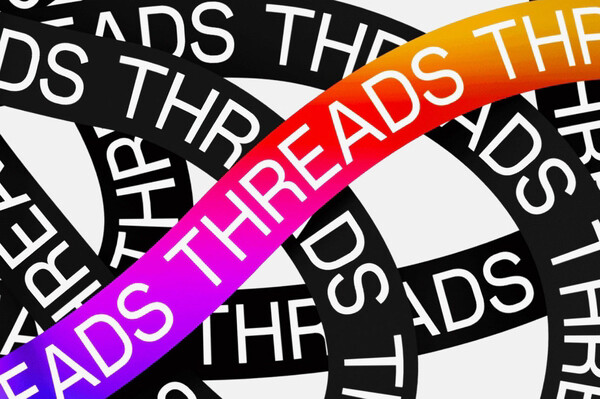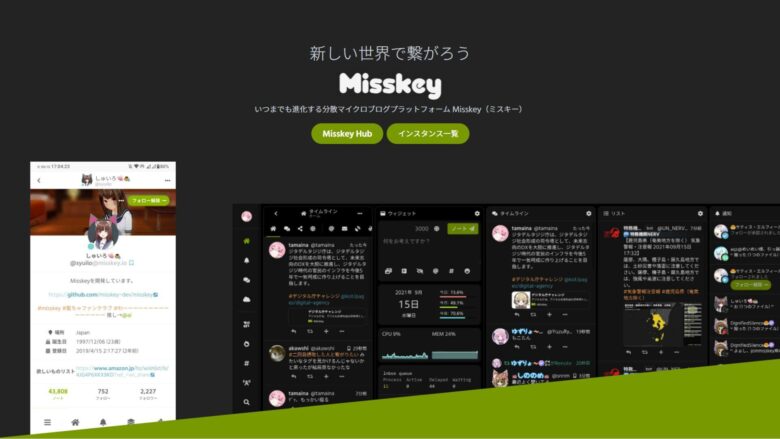Twitter (X) is one of the most used social networking sites in the entire world. Recently, the name “Twitter” and the logo mark of the blue bird, which has been familiar for many years, were changed to “X,” which also caused a stir on the Internet.
Because of the recent drastic changes, Twitter (X) users often talk about migrating to other social networking sites. In this article, we have actually registered with the social networking sites that are often mentioned as destinations for migration from Twitter (X), and investigated how they feel to use.
Threads

Threads is an application developed by Meta, which is well known for Facebook and Instagram. It is recommended for those who already have an account on Instagram, as it allows users to share an account with Instagram.
Currently, only the app version has been released, but a web version will be released soon.
I actually registered with Threads.
The system is simple, reminiscent of Twitter (X) about 10 years ago, and allows users to post text, images, and videos, reply, and re-post (retweet as in Twitter/X).
(You can also select the “Following” tab to view only the posts of users you are following.) Perhaps because of the high profile of Threads itself, many celebrities and companies have accounts on the site.
Although it is a text-based social networking site, we felt that many of the posts that showed up as recommendations were photo- and video-related. This may be due to the fact that the user base is similar to that of Instagram.
The ability to hide profiles, specify the range of posts to allow mentions, and set hidden words were all reassuring points. On the other hand, the lack of the ability to go back to the media you have posted or to look back at posts you have “liked” later left us feeling a bit short-changed.
Misskey

Misskey is a distributed SNS with multiple servers. There are various servers, such as “Misskey.io,” the most active one, and “Nijimisu.moe,” where 2D lovers gather.
The most distinctive feature is the abundance of pictograms that facilitate communication. You can see pictograms of cute characters as well as those that are just for fun. For example, many of you may have seen the “Send cash by LetterPack,” which is often used on the Misskey.io server.
I actually registered with Misskey.
This time, I registered on the “Misskey.io” server, which is considered to be the most active server with the largest number of users.
I was told that you can write up to 3,000 characters in a post. You probably won’t have any trouble posting your daily musings. Other features include file attachments, surveys, and a “hide content” function.
One thing I noticed is the rocket symbol in the new post window. I was told that it can be set to “No Coalition,” which is an item used when you don’t want other servers to search for your post.
You can choose the publication range of your post from “Public”, “Home”, “Followers”, and “Direct”. It also seems to be possible to set the extent to which reactions (stamps, etc.) are accepted.
In the privacy settings, there is no function to make the account private, but instead there was a setting to make following approval-only. It seems that by setting the public range of notes (posts) to followers only, the account is effectively made private.
Another item that caught my eye was “Reject learning by generated AI”. This may be a nice feature for creators.
Incidentally, there is also a playful feature that allows users to earn achievements based on their usage status.
Taittsuu
Taittsuu” is a humorous service developed by an engineer, Mr. hoku. It was created as a “groundbreaking” SNS that “does not limit functions even if spam is blocked” and “does not remove paid API functions without prior notice.
Since its launch in July, the number of registered users has quickly surpassed 100,000, and the service has been attracting a great deal of attention. Some functions, such as replying and posting images, are still under development, and we look forward to the future development of this SNS.
I actually registered on “taittsuu”.
The first thing I saw after registering and logging in was the “login bonus” sign. I was wondering, “What is a login bonus on a social networking service? But it seems that you can use the “Taitsu stones” you receive to draw gacha. When you turn the gacha, you get a card whose purpose is unknown.
Another use for the Taitz Stone is the “Hall of the Three Wise Men,” a function to consult with the AI about your problems.
Since we’re on the subject, I asked, “What social networking sites do you recommend for emigrating from Twitter?” I asked, and received the following reply. Macho: “Instagram!” Gal: “Instagram maybe!” Scientist “I’d try Mastodon.” …… I was amazed at the accuracy of the AI, swallowing my tsukkomi that it wasn’t “taittsuu” there.
Although the posting screen is simple, it is equipped with a “secret mode” function that disables search and RT, and a “sensitive setting” function that allows you to put a cushion before displaying the post. The number of characters could be entered up to 140.
There are still some features that have not yet been implemented, such as replies and image functions, but it will be fun to watch them grow and develop. I personally felt that this social networking service has a cozy feel similar to the early days of Twitter.
Mastodon

Mastodon, developed by Eugen Rochko of Germany, is a short-text posting service with the slogan “de-centralized” and, like Misskey, is a decentralized SNS with countless servers (8892 as of July 26), each with a different theme. The service is a distributed social networking service.
Users can communicate with users who have created accounts on other servers, and servers can be moved, so there may be no need to worry too much about choosing a server at first.
I actually registered with Mastodon.
This time, I registered with “mstdn.jp” from among a number of servers.
Looking at the home screen from the PC version, it looks like a Twitter browsing application (such as TweetDeck) from a long time ago. It has all the basic functions such as direct messages, bookmarks, favorites, and lists.
Posts are called “toots” and you can write up to 500 characters. The system has a variety of itchy features, including the ability to post images and other media, as well as a survey function and a “Contents Warning,” which provides a cushion before displaying the content of a Tweet.
What I found useful compared to Twitter (X) is the ability to specify in detail the range of publicity for Tweets, such as “public,” “unpublished,” “followers only,” and “specified recipients only. This is perfect for when you want to send out messages with a limited range, such as meeting places or current location.
The survey function can be set for periods from 5 minutes to 7 days, and from 2 to 4 items. It is also nice to be able to switch between radio buttons and check boxes.
Conclusion
These are the four social networking sites that are often talked about as destinations for migration from Twitter (X). From the multifunctional ones to the newborn ones, each SNS has its own characteristics and is very attractive.
Distributed SNSs such as Mastodon and Misskey have different parts depending on their servers, so it may be easy to find the environment you prefer. Threads is recommended for those who want to view images and videos, and for those who want to easily find popular posts outside of their following. taittsuu has unique features such as “Gacha” and “The House of the Three Wise Men,” but it is possible to watch the growth of a newborn SNS in an atmosphere that is relatively similar to Twitter. It was a fun point.


コメント